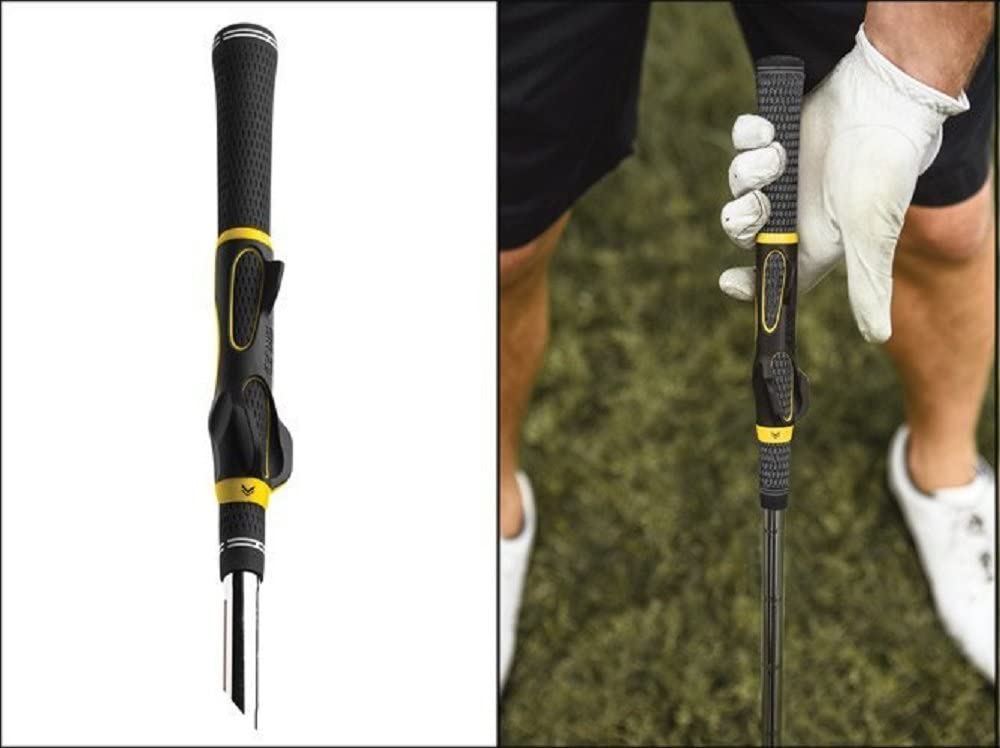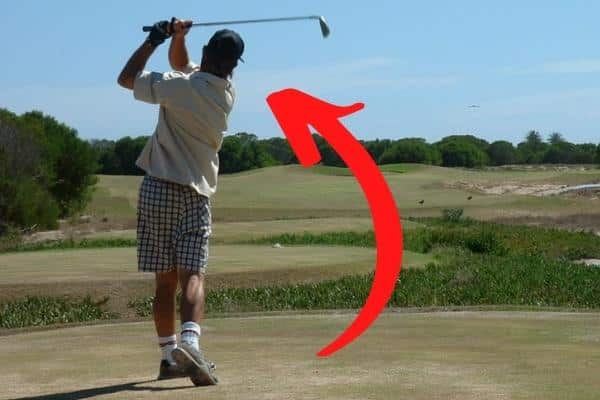Undoubtedly, a snap hook is the most damaging shot in golf.
Yes, fat and thin shots are fury-inducing, but most of the time they at least go straight, and I have seen many a thin shot run up onto a green or advance handsomely down the fairway.
Slices, too, are certainly the bane of many golfers’ existence, but their high, often ballooning flight can see them land soft and regularly nestle themselves into the short rough or find an adjacent fairway, albeit a little farther back than intended.
For me, crunching a low hook off the tee is a sure-fire recipe for despair for just about any golfer.
They are low. They run a mile. If you play at an undulating course like me, they seem to embrace every downhill slope and run endlessly into water hazards or towards boundary fences.
If you struggle with a hook off the tee or a pesky miss left on approach shots, then there’s no doubt you’ve thought long and hard about how to fix it, and spent hours on the range searching for a remedy.
Fixing a hook in golf can be achieved with the following seven steps:
- Check your grip
- Nail the takeaway
- Watch the bow of the wrist
- Control the face through impact
- Release your hips
- Fix your club path
- Align your body correctly
If followed and implemented correctly, these seven steps should set you well on the path to salvation from dreaded hooks.
Keep in mind that, for many, fixing a hook can be as simple as a grip change, but for others, it will be an arduous journey of trial and error causing great frustration before improvement is made.
So, start at the top and experiment your way through these tips, and if you reach the end, even the most severe hooking habit should be a thing of the past.
Table of contents
Step 1: Check your grip
If you are a hooker of the golf ball, there is a good chance you have a grip that is far too strong.
I’m not talking about how tightly you grip the club, but rather the way you hold it in your hands.
For a right hander, a strong grip will mean your left hand sits too far over the grip of the club, or your right hand sits too far underneath the grip.
If you have a disastrously vicious hook, then you potentially make both of these mistakes.
What this does is allows the club to turn to the left too easily, as these hand positions cause resistance from the wrists to be more prominent when twisting the club to the right, not allowing you to open the face.
To weaken the grip and help fix your hook, ensure your left hand sits on the club in a manner that you can only see two knuckles and the crease between your thumb and pointer finger draws a line up towards your right shoulder.
Your right hand should rotate around and sit a little more on top of the club, rather than underneath, creating a ‘V’ between thumb and pointer finger that also runs up towards your left shoulder.
If this is all too confusing for you, thankfully there are several grip trainers on the market that will cheaply, and easily, help you to realign your grip.
This one from SKLZ (pictured below) simply attaches to the handle of your club and is a great little tool to help avoid slipping back into bad habits.

Step 2: Nail the takeaway
Even if we have harnessed the most neutral grip in the world, our wrists can still be extremely active in the takeaway, causing our clubface to twist closed, leading to a tendency to hook.
The takeaway is the part of the swing where the club is ‘taken away’ from its resting position behind the ball, up to a position parallel with the ground.
For people who hook the ball, often the takeaway will involve a closed clubface, so when the shaft is parallel with the earth, the face of the club is pointing too far down towards the ground.
A slightly closed face at the completion of the takeaway is an OK position to be in, but if this becomes too accentuated then hooks are going to be a likely result.
Most people are going to find it incredibly difficult to determine whether their clubface is open or shut when completing a full-speed swing, so your best option here is to set up your phone on a tripod and film a few swings from down the line in slow motion (read how to do this correctly here).
If you pause at the point your club reached parallel and your clubface was closed, then this is an area to work on.
This closed takeaway is something I really struggled with for months and led to some of the most damaging hooks you could imagine.
In a lesson with a pro, he encouraged me to employ the swing thought of ‘pointing the toe of the club to the sky’, a position that initially felt quite foreign, yet did remedy my hooks and give me a higher ball flight.
Step 3: Watch the bow of the wrist
A lot of focus in professional golf circles lately has been around bowing and cupping of the wrist.
While bowing your wrist can help to deloft the club and compress the ball, if you are a habitual hooker, it also runs the risk of accentuating your left miss.
‘Cupping’ of the wrist is when the left-hand bends back towards the forearm, creating an L-shape with the hand and the wrist, while bowing sees the hand move away from the wrist, causing a more rounded shape (think Dustin Johnson).
If you have a bowed wrist at the top of the swing it will be likely you hold this shape up until impact, which closes the clubface and promotes a hooking, right-to-left shot shape.
Again, a bowed wrist can be hard to diagnose without filming a few swings, but fixing it is made a lot easier through the simple training aids on the market to help set the correct wrist position.
Ideally, you want to work towards a fairly flat wrist position at the top to create a straighter ball flight.

Step 4: Control the face through impact
If your grip, takeaway and wrist position are all in order yet you continue to hook the ball, there is a fair chance that your issue comes about from poor face alignment through impact.
For many hookers of the golf ball, that right-to-left shape comes about from overly active wrists through impact, which allows the clubface to roll over to the left too aggressively during the release of the club.
You want to feel as if your arms and club extend outwards towards your target, rather than rolling over to the left.
Your forearms will naturally need to roll and cross over, but this movement, rather than wrist roll, will help straighten out your shots.
A great way to keep the forearms working in sync with each other is a simple training aid like an arm band, designed to help maintain the right connection between the arms, something that will help prevent excessive wrist roll.
Similarly, practicing the correct impact position by using an impact bag, especially with your irons, can also help hone the right feeling.
Step 5: Release your hips
A local pro gave me a great tip once about the relationship between arms and hips, and what this could do to my ball flight.
He said a lot of the time, shots that go to the left were a result of the hips opening too late (or not at all) and shots to the right was caused by them firing too early.
Getting the hips to release at the right time is important in straightening out a closed club face, hence a failure to do so can allow hooks to form.
To help train yourself to release your hips, a training aid like the Lag Shot can actually be really useful.
As the shaft is super bendy, it is impossible to throw the arms at the ball without firing the hips as the clubhead won’t follow with the same vigour.
Making a few swings at the range with one of the Lag Shot clubs (which come in a driver, 7-iron and wedge) will force you to turn your hips early and allow the clubhead to catch up – a swing more inclined to hit straighter shots and avoid hooking the ball.
Step 6: Fix your club path
If you’re a hooker of the ball and have an overly closed clubface for any of the reasons already discussed, you are very likely to have developed an in-to-out club path in your swing.
By swinging way out to the right, many amateurs mistakenly think this should stop the ball bending to the left and into trouble off the fairway.
However, all this swing path is going to do is impart sidespin on the ball, causing it to hook even more aggressively.
In order to reduce the sidespin you are imparting on the ball, you need to work towards a slightly more out-to-in swing that will ensure the clubface meets the ball square at impact.
If you want to know for sure that you are swinging on an overly inside path, then one way to achieve this is buy purchasing a launch monitor like the FlightScope Mevo+.
It certainly isn’t the cheapest training tool on the market, but the data and feedback it gives you might well be worth the price if you are an obsessed golfer.
To train yourself to swing with more of an ‘out-to-in’ path, place something soft like a headcover about 12 inches inside the line of your ball and tee.
Your current, flawed swing will probably make contact with the headcover as you come down to strike the ball.
The aim of the game here is for you to avoid that happening, training yourself to avoid striking the headcover when you come down towards impact.
This will help square the clubface better, create a more neutral path and remove the sidespin that’s sending your ball off to the left.
For more of a challenge, place an alignment stick in the ground, angling back towards your body to create a more ‘high stakes’ target to avoid.
Step 7: Align your body correctly
If you’ve been battling a hook for months, even years, then it is pretty likely you’ve gradually started to aim more and more to the right to try and prevent hitting the ball left into hazards or out of bounds.
While this seems logical for amateurs, in practice it can actually accentuate a hook, rather than solve it at the root cause.
If changes like grip and takeaway have started to see you hit the ball straighter, then working towards a more ‘straight at the target’ alignment is a must.
The simplest way to do this is by finding a small object, like a leaf or even a divot, between you and your target, only a few inches in front of your ball.
Set up by lining the clubface up towards this object, then take your stance so that your feet and shoulders are parallel to this line.
When on the range, always practice hitting balls with an alignment stick set up on the ground so that you are always square to your target because even though you can’t take your alignment sticks out on course, this will help you form the correct habits.
Taking a stance with more open shoulders is also a method worth trying to remedy the hooks.
When you take your stance, rotate your left shoulder away from the ball a little, and this will also help to avoid losing the ball to the left.
Final message
Low, vicious hooks can be some of the most damaging misses in the game and for people with a tendency to hook the ball, achieving a straight, high ball flight can feel like a distant dream.
While these seven steps won’t necessarily apply to every golfer, by working your way through this list and experimenting with the tools and fixes suggested, you should hopefully find the pesky root cause of your nasty hook and take a few steps towards remedying and hitting straighter shots.


